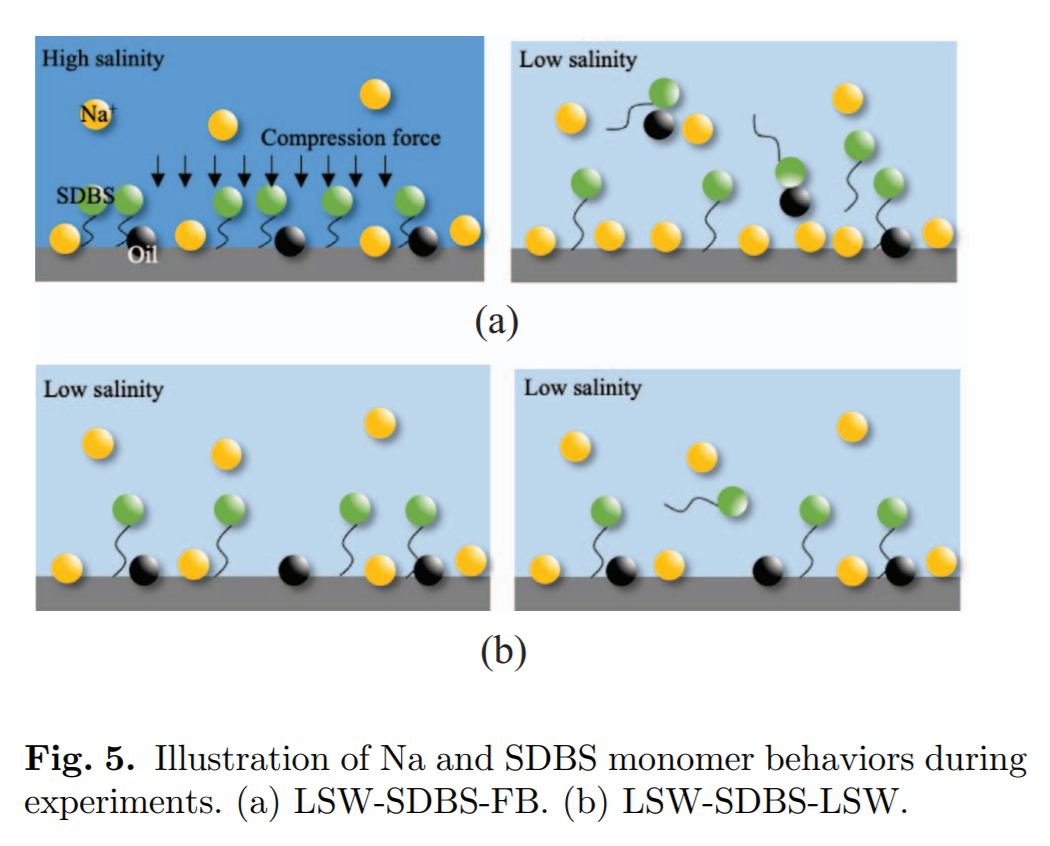Enhancing surfactant desorption through low salinity water post-flush during Enhanced Oil Recovery
在提高采收率过程中通过低矿化度水后冲刷增强表面活性剂解吸研究
Abstract.
Low Salinity Water (LSW) incorporates in surfactant Enhanced Oil Recovery (EOR) as a pre-flush is a common practice aiming to reduce the formation salinity, which affects surfactant adsorption. However, in a field implementation, the adsorption of surfactant is unavoidable, so creating a scheme that detaches the trapped surfactant is equally essential. In this study, LSW was a candidate to enhance the desorption of surfactant. LSW solely formulated from NaCl (1 wt.%), Sodium Dodecylbenzene Sulfonate (SDBS) was chosen as the primary surfactant at its critical micelle concentration (CMC, 0.1 wt.%).
It found that injecting LSW as post-flush achieved up to 71.7% of SDBS desorption that lower interfacial tension against oil (31.06 API) to 1.3 mN/m hence bring the total Recovery Factor (RF) to 56.1%. It was 4.9% higher than when LSW injecting as pre-flush and 5.2% greater than conventional surfactant flooding (without LSW). Chemical analysis unveiled salinity reduction induces Na+ ion adsorption substitution onto pore surface resulting in an increment in surfactant desorption. The study was further conducted in a numerical simulation upon history matched with core-flood data reported previously. By introducing LSW in post-flush after SDBS injection, up to 5.6% RF increased in comparison to other schemes. The proposed scheme resolved the problems of adsorbed surfactant after EOR, and further improve the economic viability of surfactant EOR.

